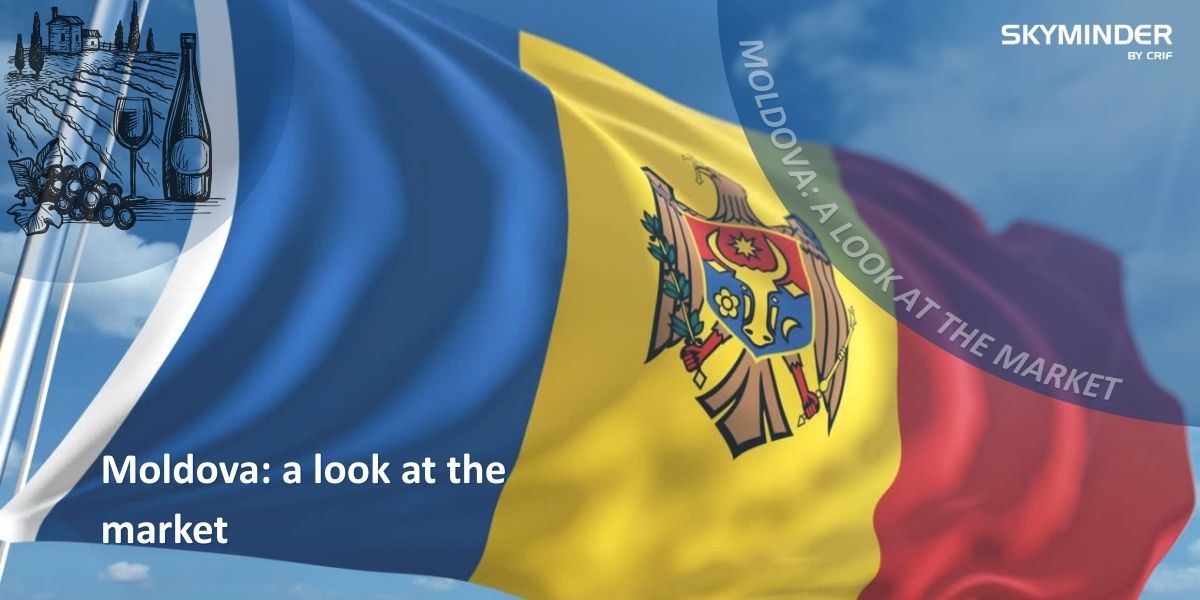OVERVIEW
Tucked away in the heart of Eastern Europe, Moldova is a country often overlooked on the map, yet full of surprises. Bordered by Romania and Ukraine, it is one of Europe’s smallest nations, with its lively capital Chișinău serving as the cultural and economic hub. Moldova’s identity is shaped by a fascinating blend of Romanian roots and Soviet heritage, reflected in its language, traditions, and architecture.
Beyond its borders, Moldova is best known for its wine culture — in fact, it boasts the world’s largest wine cellar, Mileștii Mici, stretching for more than 200 kilometers underground. This passion for viticulture has earned Moldova a place among Europe’s hidden gems for wine tourism.
In 2023, Moldova ranked:
- 132nd in terms of GDP, valued at $16.5B, out of 195 economies in the world;
- 130th in terms of total exports out of 226 countries;
- 106th in terms of GDP per capita, valued in current US$, out of 196 economies in the world.
ECONOMIC COMPLEXITY RANKING

EXPORT
In 2023 it was estimated that the principal products that were exported from Moldova were:
- Insulated Wire – $590M
- Refined Petroleum – $414M
- Seed Oils – $335M
- Wheat – $254M
- Sunflower Seeds – $160M
On the other hand, the commonest destinations for Moldova’s export were:
- Romania – $1.5B
- Ukraine – $616M
- Italy – $297M
- Germany – $279M
- Czechia – $185M
These figures highlight Moldova’s strong reliance on agriculture and energy-related exports, with Romania standing out as its dominant trade partner, absorbing nearly a third of Moldova’s total exports.
Lastly, it was revealed that, in the latest year, Moldova was the world’s 130th largest exporter overall, with total exports rising by 1.16B in the last five years, from $4.72B in 2018 to $5.88B in 2023. At the same time, according to World Bank Data360, Moldova is classified as an upper middle‑income economy, with a population of 2.4 million and a GDP per capita of $7,617 (current US) in 2024.


IMPORT
In 2023 it was estimated that the principal products that were imported into Moldova were:
- Mineral Fuels & Oils – $1.96B
- Electrical & Electronic Equipment – $876M
- Vehicles (other than railway/tramway) – $670M
- Machinery, Boilers & Nuclear Reactors – $618M
- Plastics – $352M
On the other hand, the commonest origins of Moldova’s imports were:
- Romania – $1.3B
- Ukraine – $1.07B
- China – $1.05B
- Turkey – $1.03B
- Germany – $0.64B
Lastly, it was revealed that, in the latest year, Moldova was the world’s 121st largest importer overall, with total imports rising by $2.86B in the last five years, from $7.0B in 2018 to $9.86B in 2023.

YEARLY TRADE
During the last five reported years, the exports of Moldova have increased by an amount of $1.16B, from $4.72B in 2018 to $5.88B in 2023.
The most recent exports are led by
- Insulated Wire – $590M
- Refined Petroleum – $414M
- Seed Oils – $335M
- Wheat – $254M
- Sunflower Seeds – $160M
They were exported primarily to
- Romania – $1.5B
- Ukraine – $616M
- Italy – $297M
- Germany – $279M
- Czechia – $185M
On the other hand, during the last five reported years, the imports of Moldova have increased by an amount of $2.86B, from $7.0B in 2018 to $9.86B in 2023.
The most recent imports are led by:
- Mineral Fuels & Oils – $1.96B
- Electrical & Electronic Equipment – $876M
- Vehicles (other than railway/tramway) – $670M
- Machinery, Boilers & Nuclear Reactors – $618M
- Plastics – $352M
They were imported primarily from:
- Romania – $1.3B
- Ukraine – $1.07B
- China – $1.05B
- Turkey – $1.03B
- Germany – $0.64B
CONCLUSIONS
Despite its modest size, Moldova stands out as a nation of resilience and hidden treasures. Known for its vineyards, folklore, and the world’s largest wine cellar, it balances cultural richness with steady economic progress. Classified as an upper middle‑income economy with a population of 2.4 million and a GDP per capita of 7,617 (current US) in 2024, Moldova continues to strengthen its role in regional trade. Over the last five years, exports grew from $4.72B in 2018 to $5.88B in 2023, led by insulated wire, refined petroleum, and seed oils, while imports rose from $7.0B to $9.86B, driven by mineral fuels, machinery, and vehicles. With Romania as its primary partner on both sides of trade, Moldova’s economic ties reflect its geographic position and cultural connections, underscoring its importance as a bridge between Eastern and Western Europe.
Source:https://data.worldbank.org/#

